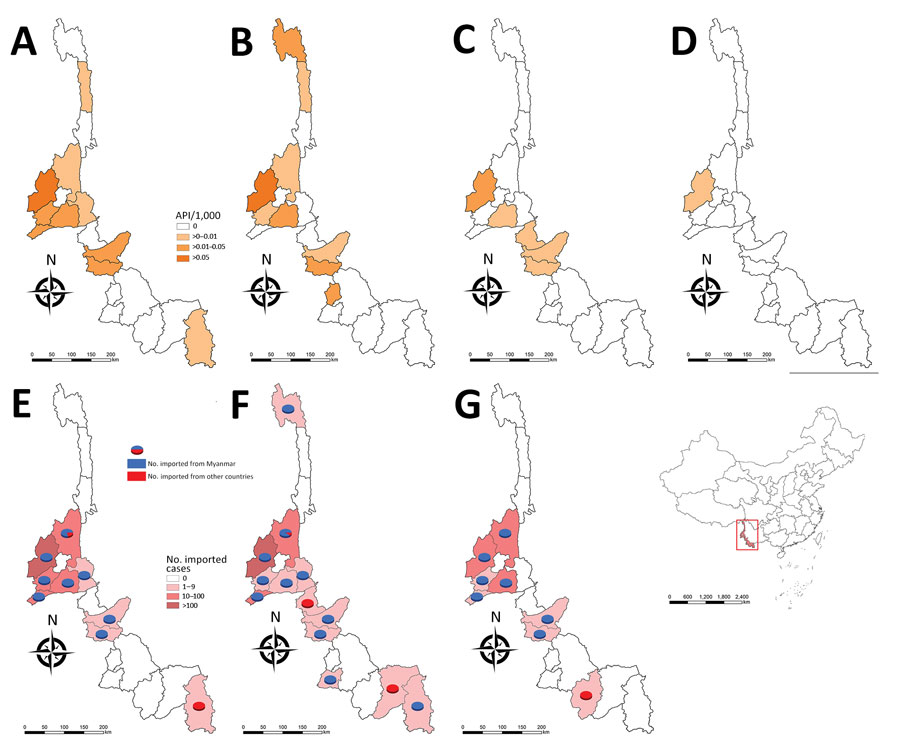Volume 27, Number 11—November 2021
Dispatch
Epidemiologic Analysis of Efforts to Achieve and Sustain Malaria Elimination along the China–Myanmar Border
Figure 1

Figure 1. API per 1,000 persons and numbers of imported cases by year in the 18 China counties along the border with Myanmar, 2013–2019. A) 2013 API, B) 2014 API, C) 2015 API, D) 2016 API; E) 2017 imported cases, F) 2018 imported cases, G) 2019 imported cases. Inset map shows location of China–Myanmar border area (rectangle). API, annual parasite index.
Page created: August 25, 2021
Page updated: October 19, 2021
Page reviewed: October 19, 2021
The conclusions, findings, and opinions expressed by authors contributing to this journal do not necessarily reflect the official position of the U.S. Department of Health and Human Services, the Public Health Service, the Centers for Disease Control and Prevention, or the authors' affiliated institutions. Use of trade names is for identification only and does not imply endorsement by any of the groups named above.